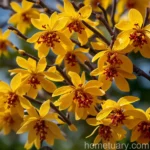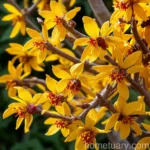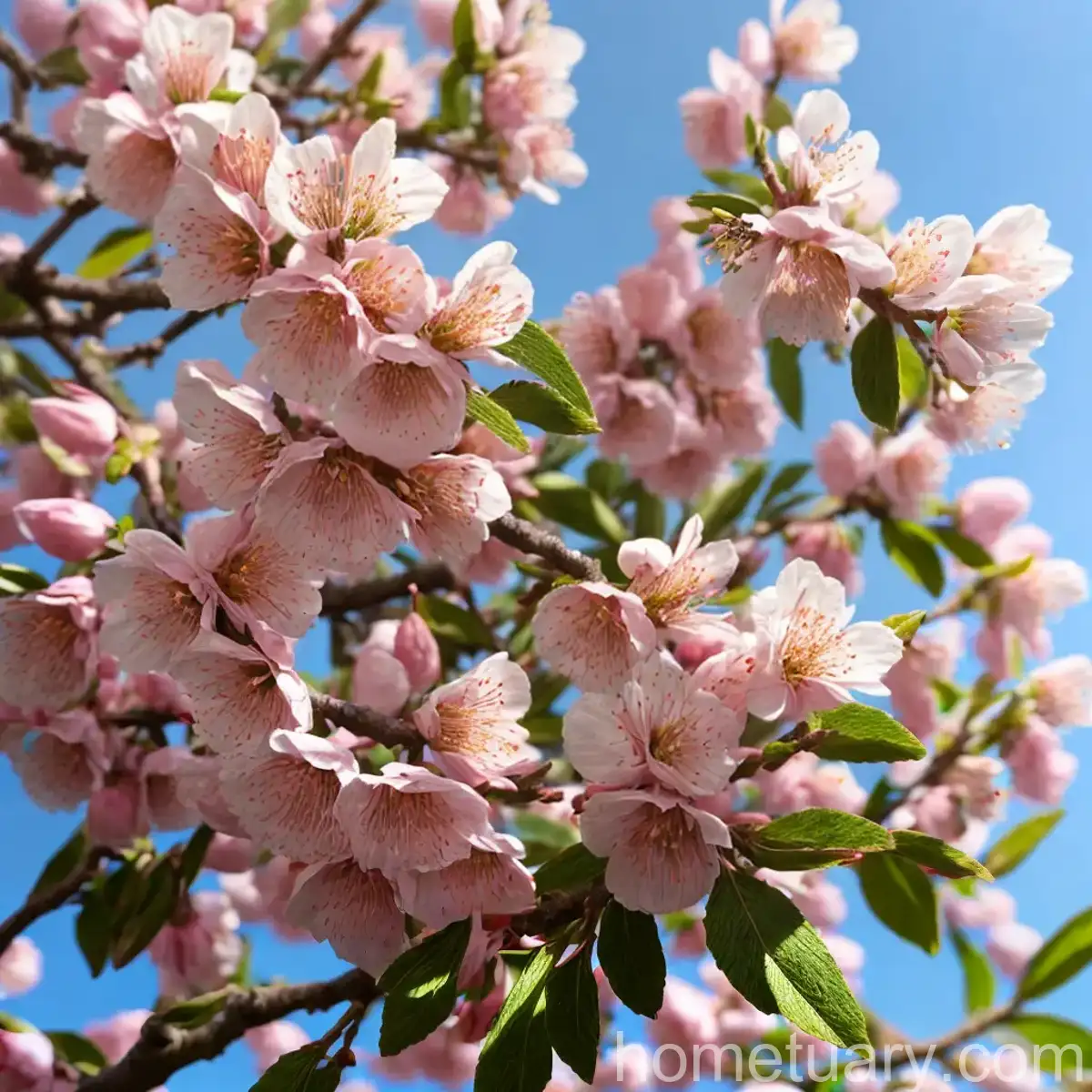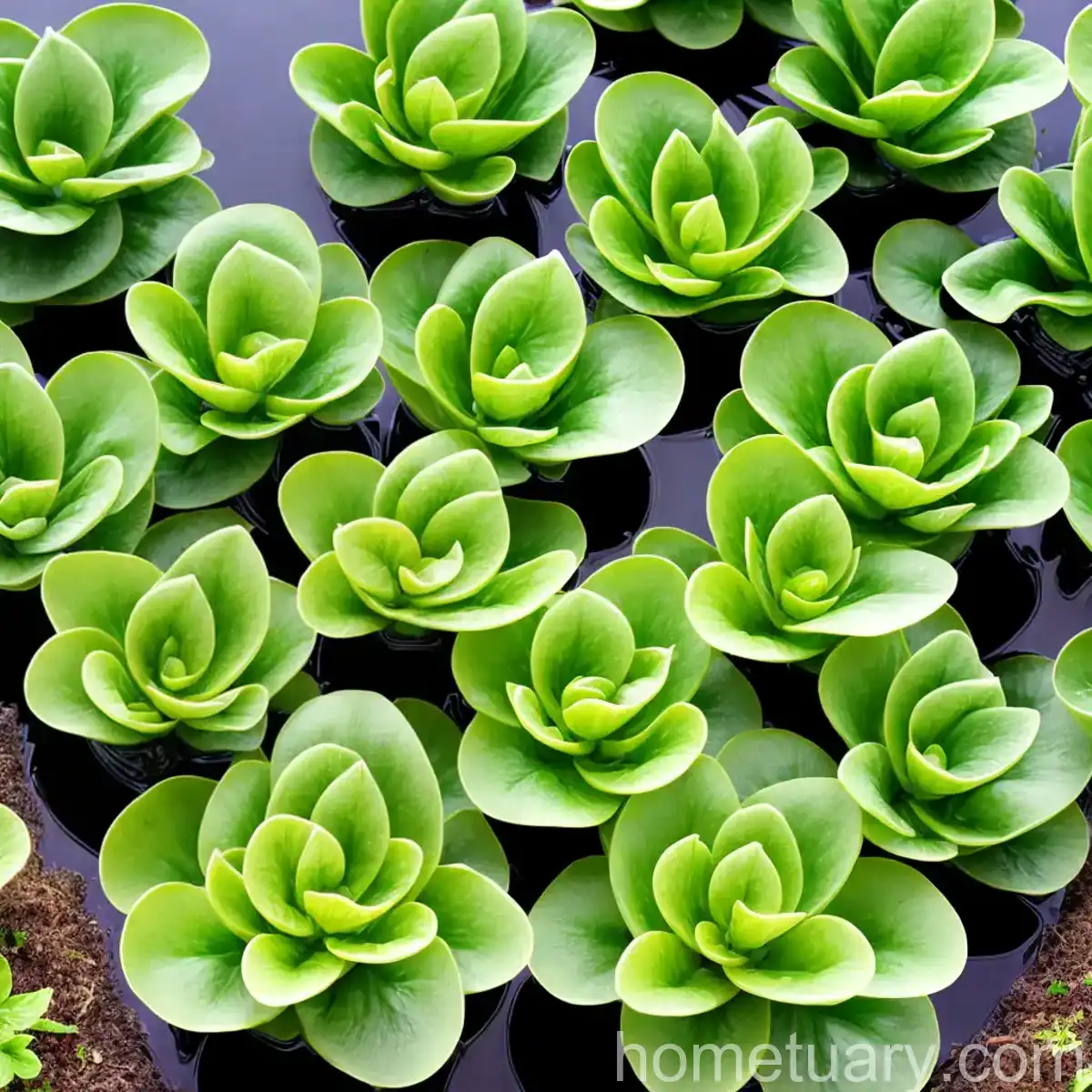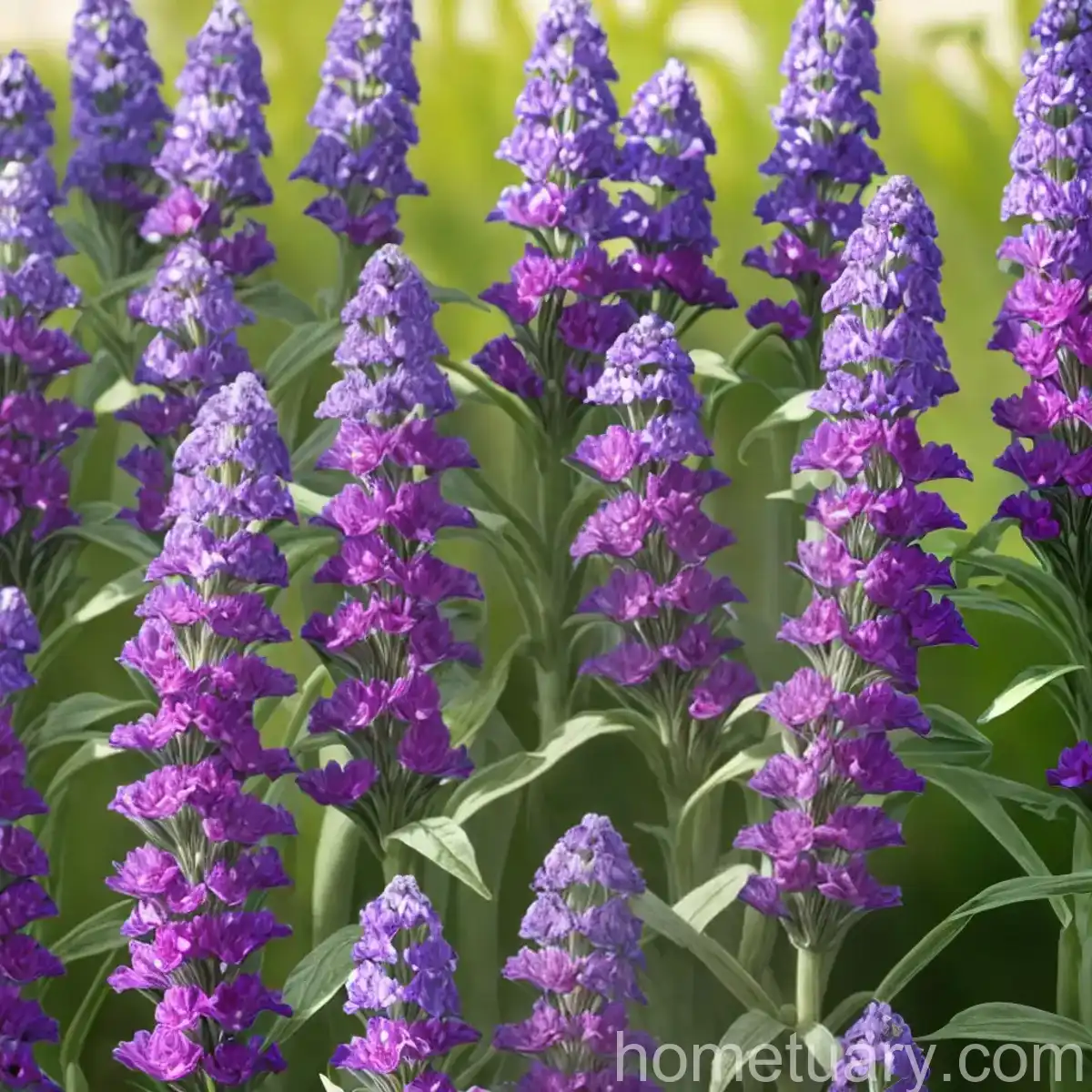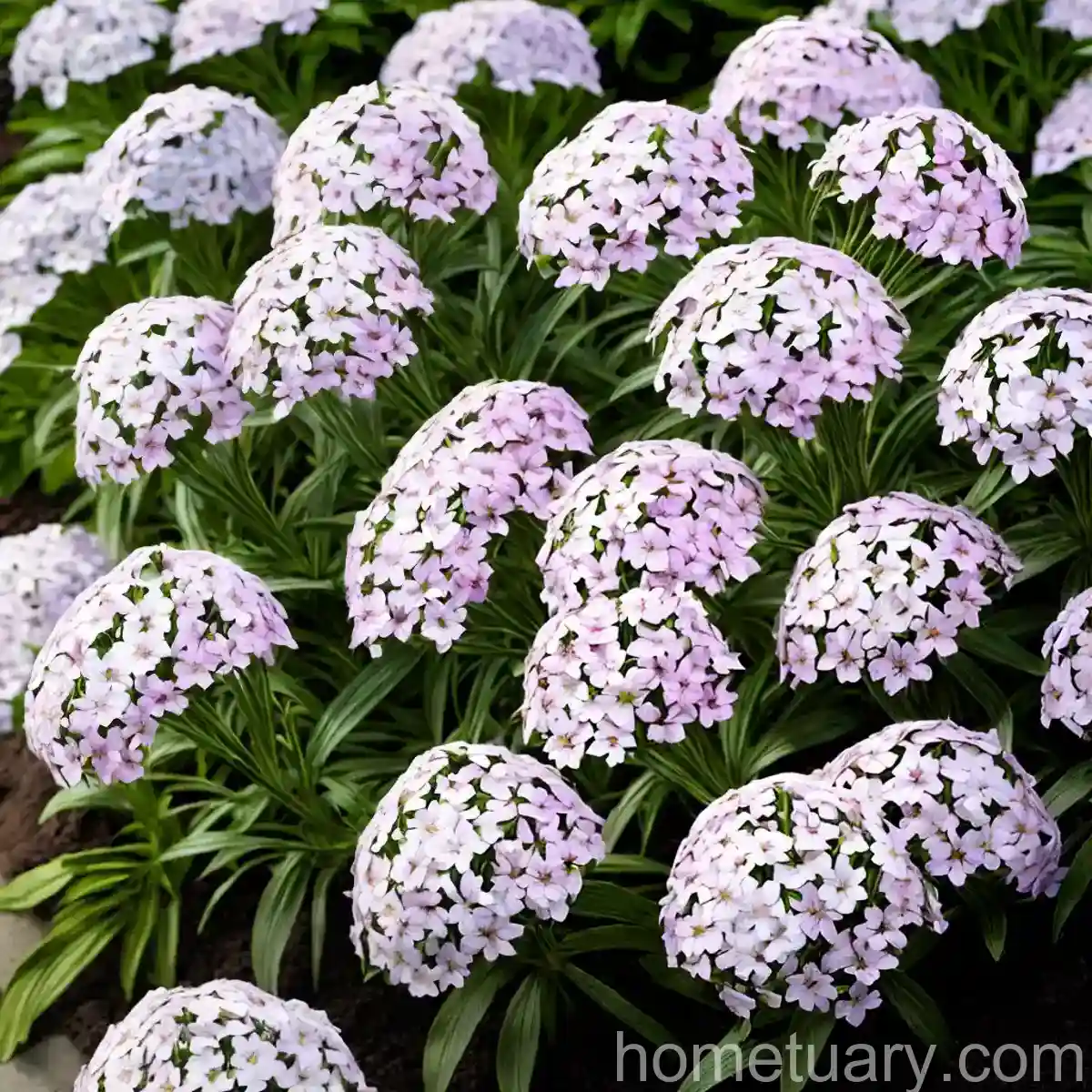The Enchanting Ozark Witch Hazel (Hamamelis vernalis)
Plants have always held a fascination for humanity, inspiring art, poetry, and scientific inquiry. The world of plants is vast, and the Ozark witch hazel (Hamamelis vernalis) is a remarkable addition to this rich tapestry. This unique species of witch hazel is a cold-hardy shrub that blooms in the winter, bringing color and fragrance to the dreariest of seasons. In this article, we will delve into the captivating world of Ozark witch hazel, exploring its characteristics, care requirements, uses, and much more.
What is Ozark Witch Hazel (Hamamelis vernalis)?
Ozark witch hazel, scientifically known as Hamamelis vernalis, is a deciduous shrub belonging to the Hamamelidaceae family. This native plant of the Ozarks is renowned for its remarkable ability to bloom during the winter months, a time when most other plants are dormant. The plant is characterized by its distinctive, fragrant flowers and attractive fall foliage, making it a valuable addition to gardens, landscapes, and natural habitats.
Key Takeaways – Ozark Witch Hazel (Hamamelis vernalis)
Before we embark on our journey to explore the Ozark witch hazel, let’s take a moment to highlight the key takeaways about this fascinating plant.
- Winter Bloomers: Ozark witch hazel is celebrated for its ability to bloom during the winter, adding vibrancy to the cold season.
- Native Plants of the Ozarks: As a native plant of the Ozarks, this species holds ecological significance and is deeply rooted in the region’s natural heritage.
- Fragrant Winter Blooms: The flowers of the Ozark witch hazel exude a delightful fragrance, enhancing the sensory experience of winter landscapes.
- Cold-Hardy Shrubs: Known for its cold tolerance, the Ozark witch hazel thrives in climates with chilly winters, adding resilience to gardens.
- Deciduous Winter Plants: This deciduous shrub undergoes a stunning transformation in the fall, with its leaves turning into a spectacle of colors before winter sets in.
As we unravel the allure of Ozark witch hazel, we will explore its culture, uses, and the essential aspects of its care, including water, sunlight, fertilizer, soil, pruning, propagation, and container considerations.
Culture of Ozark Witch Hazel
Understanding the cultural requirements of Ozark witch hazel is essential for ensuring its optimal growth and blooming. Let’s delve into the various facets of its culture.
Water
Ozark witch hazel generally prefers moist, well-drained soil. During its establishment phase, consistent watering is important to aid in root development. However, it is essential to avoid waterlogged conditions, as this can lead to root rot. Once mature, the plant exhibits good drought tolerance, though regular watering during dry spells is beneficial for optimal growth and flowering.
When watering Ozark witch hazel, it is advisable to water deeply, allowing the soil to dry slightly between waterings. Mulching around the base of the shrub helps to retain soil moisture and regulate soil temperature, contributing to the plant’s overall health.
Sunlight
In terms of sunlight requirements, Ozark witch hazel thrives in partial to full sun. Providing the plant with at least 4-6 hours of direct sunlight fosters robust growth and ensures prolific flowering. However, in hot climates, some afternoon shade can be advantageous, particularly to protect the plant from excessive heat and sunburn.
Fertilizer
When it comes to fertilizing Ozark witch hazel, a balanced, slow-release fertilizer formulated for woody plants can be applied in early spring, just as the buds begin to swell. It is important not to over-fertilize, as this can lead to excessive foliage at the expense of flower production.
Organic matter, such as well-rotted compost, can also be incorporated into the soil around the plant and replenished annually to enrich the soil quality and provide a steady source of nutrients.
Soil
Ozark witch hazel thrives in well-drained, acidic soils with a pH range of 5.5 to 6.5. Amending the soil with organic matter, such as peat moss or compost, can improve its texture and enhance its moisture-retention capacity. Additionally, a well-draining soil mix prevents waterlogged conditions, which can be detrimental to the plant’s health.
It is important to note that Ozark witch hazel is adaptable to various soil types, including loamy, sandy, or clay soils, as long as they are well-drained.
Pruning
Proper pruning is essential for maintaining the health, shape, and flowering potential of Ozark witch hazel. Pruning is best carried out immediately after flowering, enabling the plant to set buds for the following year during the spring and early summer months.
The main objectives of pruning Ozark witch hazel include:
- Removing Dead or Diseased Wood: Pruning helps eliminate any dead, damaged, or diseased wood, promoting overall plant health.
- Shaping the Plant: Light pruning can be performed to maintain a balanced and aesthetically pleasing shape of the shrub.
- Encouraging Flowering: Pruning can stimulate new growth and enhance flowering for the following season.
It is important to avoid extensive pruning, as this can reduce the following year’s flower production. Instead, focus on minimal, selective pruning to achieve the desired outcomes without compromising the plant’s vitality.
Propagation
The propagation of Ozark witch hazel can be accomplished through various methods, including:
- Seed Propagation: Propagation from seeds is possible, though it may take several years for the seedlings to reach maturity and begin flowering.
- Softwood Cuttings: Softwood cuttings taken in late spring or early summer can be rooted to produce new plants. The cuttings should be treated with a rooting hormone and planted in a well-draining propagation medium.
- Layering: Air layering or ground layering can be employed to encourage the development of roots on a stem while it is still attached to the parent plant. Once the roots have formed, the new plant can be separated and transplanted.
Each propagation method has its own requirements and challenges, and the success rate may vary. Experimenting with different techniques can provide valuable insights and expand one’s horticultural expertise.
Container Popularity
Ozark witch hazel has gained popularity as a container plant, particularly for those who wish to enjoy its winter blooms up close on patios, balconies, or other outdoor spaces. When growing Ozark witch hazel in containers, the following considerations are important:
- Container Size: Select a container that provides ample space for the plant’s roots to grow and develop. A larger container can help insulate the roots during extreme temperatures.
- Well-Draining Soil: Use a high-quality, well-draining potting mix to ensure proper root aeration and drainage.
- Watering: Container-grown plants may require more frequent watering, especially during hot, dry periods, as they are more susceptible to moisture fluctuations.
Regular monitoring of the plant’s moisture needs is essential when growing Ozark witch hazel in containers, as they can dry out more quickly than plants in the ground.
Common Diseases and Pest Control
While Ozark witch hazel is generally a resilient plant, it is still susceptible to certain diseases and pests that can affect its growth and flowering. Understanding these challenges is crucial for effective management and prevention.
Disease Diagnosis
Some of the common diseases that can affect Ozark witch hazel include:
- Powdery Mildew: This fungal disease presents as a white or gray powdery coating on the leaves, stems, and buds, often leading to distorted growth and reduced plant vigor.
- Leaf Spot: Leaf spot diseases can cause dark, circular lesions on the leaves, eventually leading to premature leaf drop if left unmanaged.
- Root Rot: Overly wet or waterlogged conditions can predispose the plant to root rot, resulting in wilting, yellowing leaves, and overall decline.
Proper sanitation, adequate air circulation, and the removal and disposal of infected plant material can aid in disease prevention and control. Additionally, applying fungicidal treatments as a preventive measure can help safeguard the plant from fungal diseases.
Common Pests
Ozark witch hazel may encounter pest pressures from insects such as aphids, scale insects, and spider mites. These pests can cause damage by feeding on the plant’s sap, leading to stunted growth, leaf discoloration, and a general decline in plant vigor.
To address pest infestations, employing natural predators, such as ladybugs or lacewings, can offer biological control, reducing the need for chemical interventions. Regular monitoring of the plant for signs of pest activity enables early intervention, preventing widespread damage and supporting the plant’s overall well-being.
Botanist’s Tips
In cultivating and caring for Ozark witch hazel, there are several key tips that can enhance the success and vigor of this remarkable plant. As we continue our exploration, let’s uncover these valuable insights and recommendations.
Botanist’s Tips for Ozark Witch Hazel Care
- Mulching: Applying a layer of mulch around the base of the plant helps insulate the roots, conserve moisture, and suppress weed growth.
- Seasonal Pruning: Perform light, selective pruning immediately after flowering to maintain the plant’s shape and encourage the development of new growth and flower buds for the following year.
- Soil Amendment: Regularly replenish the soil with organic matter to enrich its fertility and improve its structure, fostering healthy root development.
Incorporating these tips into the care routine for Ozark witch hazel can contribute to the plant’s longevity and vibrancy, ensuring a splendid display of winter blooms year after year.
Fun Facts about Ozark Witch Hazel
As we immerse ourselves in the captivating world of Ozark witch hazel, there are several intriguing and delightful facts that add to the enchantment surrounding this plant. Let’s uncover some of these fun and fascinating tidbits about Ozark witch hazel.
Fascinating Fun Facts
- Medicinal Uses: Witch hazel has a history of medicinal uses, with Native American tribes utilizing its extract for various remedies, including treating skin irritations and inflammations.
- Natural Dye: The bark of witch hazel can be used to produce a natural dye, yielding a range of warm, earthy tones for textiles and craftwork.
- Wildlife Benefits: The flowers of Ozark witch hazel attract early pollinators, providing a vital food source for bees and other insects during the winter months when floral resources may be limited.
These fun facts add depth to the allure of Ozark witch hazel, highlighting its historical significance, cultural relevance, and ecological contributions.
Links to External Resources
As we explore the world of Ozark witch hazel, it is invaluable to access additional resources and information to further enrich our knowledge and appreciation of this remarkable plant. Here are some useful external links for delving deeper into the realm of Ozark witch hazel:
- Missouri Botanical Garden – Hamamelis vernalis
- University of Missouri Extension – Witch Hazel for the Winter Garden
- The American Horticultural Society – Witch Hazels for the Garden
- North Carolina State University Extension – Witch Hazel for Winter Blooms
- Royal Horticultural Society – Ozark Witch Hazel Cultivation Notes
By tapping into these external resources, plant enthusiasts, horticulturists, and nature lovers can expand their knowledge and gain valuable insights into the world of Ozark witch hazel, enhancing their gardening endeavors and deepening their connection with the natural world.
Conclusion
In the realm of winter-flowering plants, Ozark witch hazel (Hamamelis vernalis) stands out as a captivating and resilient species that adds vibrancy and fragrance to the winter landscape. Its exceptional cold-hardiness, fragrant blooms, and cultural adaptability make it a cherished addition to gardens, landscapes, and natural habitats.
As we conclude our exploration of Ozark witch hazel, we have journeyed through its cultural requirements, uses, care practices, and the fascinating aspects of its history and ecological contributions. From its enchanting winter blooms to its value as a native plant of the Ozarks, Ozark witch hazel embodies a rich tapestry of botanical wonders, cultural significance, and ecological benefits.
By embracing the insights gleaned from this exploration and tapping into the diverse resources available, plant enthusiasts and horticulturists can foster a deeper appreciation for Ozark witch hazel and cultivate thriving, sustainable landscapes that honor the wondrous contributions of native plants like the Ozark witch hazel.
In the enduring cycle of nature, Ozark witch hazel stands as a testament to the resilience, beauty, and enchantment of the botanical world, weaving its magic through the quietude of winter and inspiring awe and admiration in those who behold its graceful blooms.
Remember, in the lush realm of plants, each species tells a story, enriches the landscape, and beckons us to cherish the profound interconnectedness of the natural world.
By delving into the captivating allure of Ozark witch hazel, we have embraced the resilience, fragrance, and beauty of a plant that continues to enchant and inspire. From its cultural requirements to its ecological contributions, Ozark witch hazel stands as a testament to the enduring spirit of native plants and the enchanting tapestry of the natural world.





